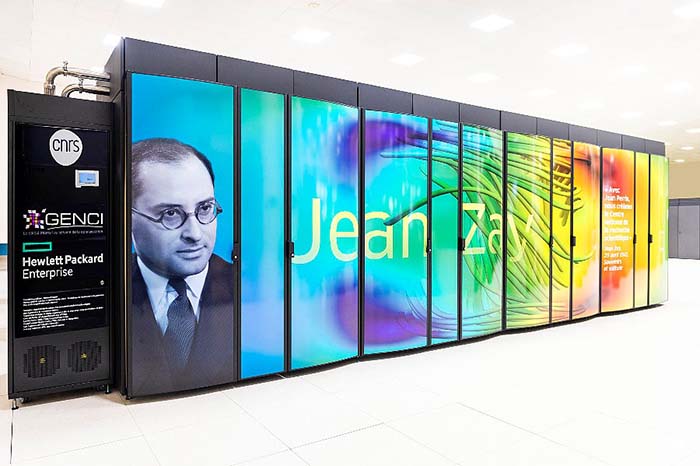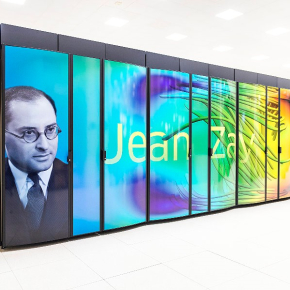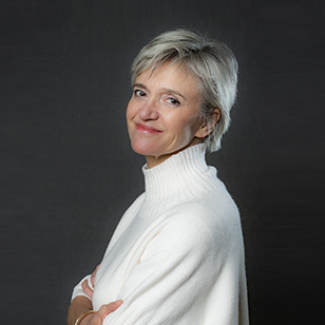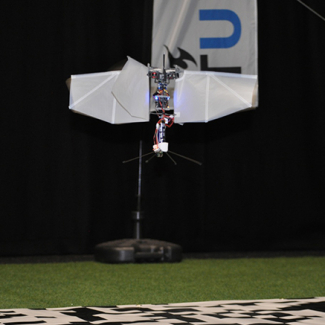
Jean Zay, France's most powerful supercomputer for research
28 petaflops, which is 28 million of billion operations per second, is the new record set by supercomputer Jean Zay. Jean Zay was extended in summer 2020 and is now up and running again. Whether they are combating Covid-19, researching climate or astrophysics, or developing artificial intelligence, Jean Zay, GENCI's supercomputer, provides the scientific community with increasingly extensive computational capabilities. It was developed by HPE and is operated by the CNRS Institut du Développement et des Ressources en Informatique Scientifique (IDRIS). Jean Zay’s power would put it 10th in the last ranking of the world’s top 500 supercomputers.
The Jean Zay supercomputer now occupies a surface area of 150 m2, weighs 43 tonnes and approaches 2 MWh of power consumption. It is the first French supercomputer where high-performance computing and artificial intelligence converge, and it came about from the national plan #AIForHumanity. Its computing power reaches 28 petaflops per second (28 million of billion operations per second), thanks to its 86,344 computational cores supported by 2696 GPU-based accelerators, of which 1404 are new. These optimize processing for the intensive calculations and provide more than 82% of the computing power. On the data storage side, Jean Zay is organized in several hierarchical levels that mean it can support a very large data access load, with flow rates of almost 0.5 TB per second. Jean Zay is also a champion of energy efficiency thanks to its latest generation warm-water cooling technology, from which energy is recovered to heat the IDRIS CNRS building and soon the buildings of the Paris-Saclay University.
Jean Zay’s architecture is a prelude to the exaflopic machines (capable of making 1 billion of billion operations) of the future. As such, Jean Zay is an ideal platform for developing the massively parallel accelerated applications of tomorrow, where a single researcher accesses all or part of the supercomputer to solve a given scientific problem on the machine’s scale, or to perform a set of independent projects (e.g. data-set simulations and studies on uncertainty or optimization) or coupled projects (multi-physics simulations).
Less than a year after it was inaugurated, Jean Zay is already meeting the needs of 1600 researchers, both academic and industrial, through more than 600 open research projects coming from the digital simulation and artificial intelligence communities.



